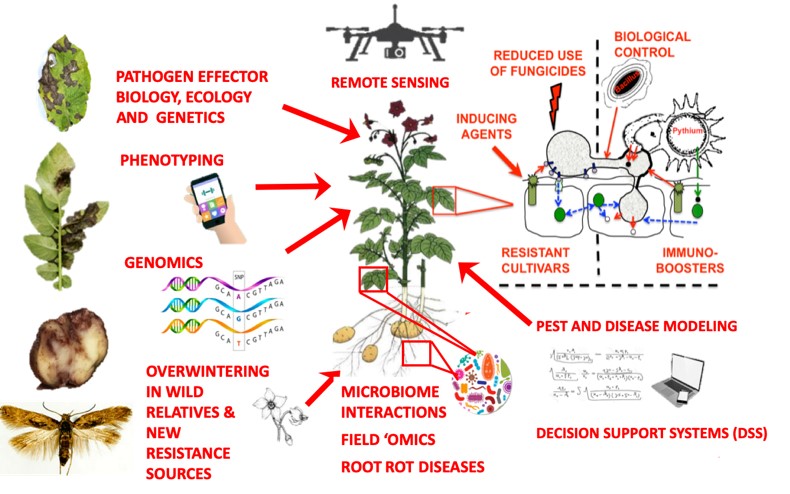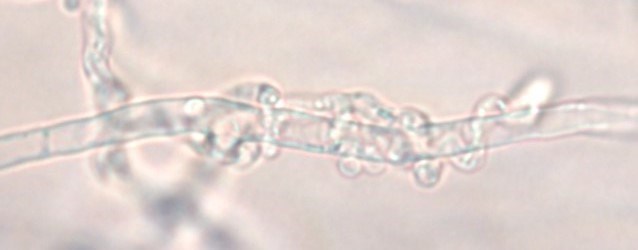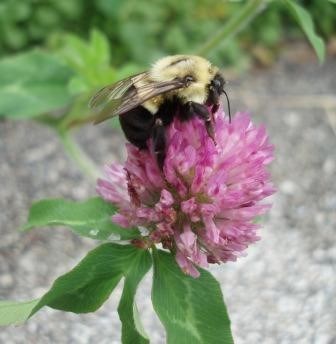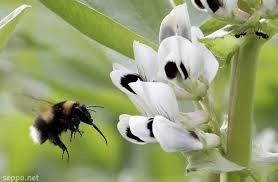Contact
Department of Plant Protection Biology
Integrated Pest Management (IPM) has been mandatory for farmers in EU countries since 2014, yet we still lack a lot of scientific knowledge to help us use IPM effectively in many European crops. Therefore, we at the Integrated Plant Protection Unit aim to generate knowledge towards the development of sustainable pest and disease management solutions based on conceptual theory and empirical eco-evolutionary, molecular and genetic data that can meet the needs of current and evolving plant production systems.
Integrated Pest Management (IPM) as defined by the EU means:
“careful consideration of all available plant protection methods and subsequent integration of appropriate measures that discourage the development of populations of harmful organisms and keep the use of plant protection products and other forms of intervention to levels that are economically and ecologically justified and reduce or minimise risks to human health and the environment. ‘Integrated pest management’ emphasises the growth of a healthy crop with the least possible disruption to agro- ecosystems and encourages natural pest control mechanisms.”
We work on the Science of IPM!
IPM is a broad multidisciplinary subject and we focus on two interconnected subdivisions within IPM using a variety of methods and approaches:

SSF funded 2015-2020
In this project we are interested in fundamental oomycete biology and development. We also hope to identify developmental checkpoints that could be targets for new drugs to stop oomycete growth.
Researchers on project:
Laura Grenville-Briggs Didymus (Prof)
Maja Brus-Skalej (PhD student)
Publications:
Resjö, S., Brus-Szkalej M., Ali, A., Meijer, H.J.G., Sandin, M., Govers, F., Levander F., Grenville-Briggs, L.J., Andreasson, E. (2017) Proteomic analysis of Phytophthora infestans reveals the importance of cell wall proteins in pathogenicity. Molecular and Cellular Proteomics 16, 1958-1971
SSF and SciLifeLab funded 2015-2020; Crafoord Foundation funded, 2017-2018; Carl Tryggers foundation funded, 2017-2018 and 2020; EU funded (PROTECTA MSCA-ITN 2018-2023)

In this project we are interested in further developing P. oligandrum for use as a BCA. To do this, we study the biology of P. oligandrum, the pathogenicity determinants produced during host colonization and particularly the development, germination and dormancy determinants of oospores. Improving oospore germination should allow us to improve the use of P. oligandrum. We also study the effects of P. oligandrum on the rhizosphere microbiome, secondary metabolite production, and microbe-microbe interactions at the molecular, cytological and genetic level. We also carry out comparative genomics to identity unique and conserved genetic determinants of mycoparasites compared to plant and insect pathogens in the oomycetes. Finally, we assess the ability of P. oligandrum to control various diseases in field trials.
Researchers on project:
Laura Grenville-Briggs Didymus (Prof)
Christian Benjamin Andersen (PhD student)
Linnea Almqvist (PhD student)
Erland Liljeroth (Extension Prof)
Collaborators:
Dr Elodie Gaulin (LRSV, University Paul Sabatier III, Toulouse, France)
Prof Bernard Dumas (LRSV, University Paul Sabatier III, Toulouse, France)
Dr Thomas Rey (De Sangosse, France)
Prof Daolong Dou (Nanjing Agricultural University, China)
Prof Pieter van West (University of Aberdeen, UK)
Alumni:
Dr Diya Sen (SCION, New Zealand)
Dr Cassidy Million (USDA-ARC)
Dong Liang (Nanjing Agriculture University, China)
Michael Löbmann (MSc student)
Publications:
Shen, D., Zhaoyang, T., Wang, C., Wang, J., Dong, Y., Chen, Y., Wei, Y., Cheng, B., Zhang, M., Grenville-Briggs, L.J., Tyler, B.M., Dou, D.,Xia, A. (2019) Infection mechanisms and putative effector repertoire of the mosquito pathogenic oomycete Pythium guiyangense uncovered by genomic analysis. PLoS Genetics, 15 (4), e1008116.
Vetukuri RR,Kushwaha SK, Sen D, Whisson SC, Lamour KH, Grenville-Briggs LJ (2018) Genome sequence resource for the oomycete taro pathogen Phytophthora colocasiae.Molecular Plant-Microbe Interactions doi: 10.1094/MPMI-12-17-0321-A.
Grenville-Briggs, L.J., Kushwaha, S.K., Cleary, M.R., Witzell, J., Savenkov, E.I., Whisson, S.C., Chawade, A., Vetukuri, R.R. (2017) Draft Genome of the Oomycete pathogen Phytophthora cactorum Strain LV007 isolated from European Beech (Fagus sylvatica) Genomics Data 12, 155-156. doi:10.1016/j.gdata.2017.05.010.
Kushwaha, S. K., Vetukuri, R.R., & Grenville-Briggs, L.J. (2017) Draft Genome Sequence of the Mycoparasitic Oomycete Pythium oligandrum Strain CBS 530.74. Genome Annoucements 5:e00346-17.
Kushwaha, S. K., Vetukuri, R.R., & Grenville-Briggs, L.J. (2017) Draft Genome Sequence of the mycoparasitic oomycete Pythium Periplocum strain CBS 532.74. Genome Annoucements 5:e00057-17. 5.
Löbmann MT, Vetukuri RR, de Zinger L, Alsanius BW, Grenville-Briggs LJ, & Walter AJ. (2016) The occurrence of pathogen suppressive soils in Sweden in relation to soil biota, soil properties and farming practices. Applied Soil Ecology 107 57-65. http://dx.doi.org/10.1016/j.apsoil.2016.05.011.
Formas funded 2016-2020
In this project, we are studying pathogen biology in the field and competition or synergism between multiple pathogens on the same host plant and the implications of these interactions for disease control and fungicide resistance.
Researchers on project:
Laura Grenville-Briggs Didymus (Prof)
Sophie Brouwer (PhD student)
Erland Liljeroth (Extension Prof)
Hadis Mostafanezhad (exchange PhD-student)
Collaborators:
Firuz Odilbekov (Researcher)
Erik Andreasson (Prof)
Publications:
Odilbekov F, Edin E, Mostafanezhad H, Hilde Coolman H, Grenville-Briggs LJ, Liljeroth E. (2019) Within-season changes in Alternaria solani populations in potato in response to fungicide application strategies. Eur J Plant Pathology https://doi.org/10.1007/s10658-019-01826-8.
EU funded (PROTECTA MSCA-ITN 2018-2023) and Formas funded 2020-2024
This project studies both the basic biology of pathogenicity determinants (effectors) in the oomycete Phytophthora infestans and the expression and evolution of these in field conditions and the implications of this research for disease control.
Researchers on project:
Laura Grenville-Briggs Didymus (Prof)
Jenifer Seematti Sundar (PhD student)
Jiasui Zhan (Prof)
Collaborator:
Dr Steve Whission, James Hutton Institute, UK.
Dr Eugene Savenkov, SLU Ultuna
Publications:
Vetukuri, R.R., Whisson, S.C., & Grenville-Briggs, L.J. (2017) Phytophthora infestans effector Pi14054 is a novel candidate suppressor of host silencing mechanisms. Eur J Plant Pathology 149: 771-777.doi: 10.1007/s10658-017-1222-9
Kalyandurg PB, Tahmasebi A, Vetukuri RR, Kushwaha SKK, Lezzhov AA, Solovyev AG, Grenville-Briggs LJ, Savenkov, EI. (2019) Efficient RNA silencing suppression activity of Potato Mop-Top Virus 8K protein is driven by variability and positive selection. Virology 535, 111-121
Swedish Research Council VR, Carl Trygger Foundation funded 2019-2022; Crafoord Foundation, CF Lundströms stiftelse funded 2018-2020
This project on wild Solanum aims to i) collect and determine airborne spores from potato pathogens in nature and agricultural fields and ii) investigate natural selection of plant defence against antagonists in wild Solanum in relation to the composition of the root microbiome in different habitats.
Researchers on project:
Collaborators:
Hadis Mostafanezhad (exchange PhD-student)
Christian Andersen, (PhD-student)
Erland Liljeroth (Extension Prof)
Laura Grenville-Briggs Didymus (Prof)
Lars Råberg, Lund University.
Publications
Masini, L., Grenville-Briggs L.J., Andreasson, E.A., Råberg, L., Lankinen Å. (2019) Tolerance and overcompensation to infection by Phytophthora infestans in the wild perennial climber Solanum dulcamara. Ecology and Evolution, 9 (8), 4557-4567.
EU funded (PROTECTA MSCA-ITN 2018-2023)
This project studies the biology and biocontrol of the oomycete root rot pathogen Aphanomyces cochlioides. We also hope to better define the genetic determinants of resistance to this disease in sugar beet to aid new commercial breeding strategies.
Researchers on project:
Laura Grenville-Briggs Didymus (Prof)
Valentina Rossi (PhD student)
Erik Alexandersson (Researcher)
Collaborators:
Dr Louise Holquist (Maribohilleshög AB)
Dr Elodie Gaulin (LRSV, University Paul Sabatier III, Toulouse, France)
Swedish research council (VR) funded 2018-2022
This project aims to investigate the epidemiology, effector biology and genetics of cocoa black pod disease (caused by Phytophthora spp) and Cocoa Swollen Shoot Virus in cocoa plantations in Sierra Leone and Togo. This information will be used to help develop better control measures against these diseases.
Researchers on project:
Laura Grenville-Briggs Didymus (Prof)
Mohammed Mambu Luseni (PhD student)
Aakash Chawade (Associate Professor)
Collaborators:
Dr Ranjana Bhattacharjee (IITA, Nigeria)
Dr Lava Kumar (IITA Nigeria)
Prof Sahr Ngoba Fomba, Njala University
Sierre Leone, Dr Kpemoua Kossi, ITRA Togo
Ametefe Komivi (research assistant), ITRA, Togo
Patric Stolt, Intertek AB
Regionalt jordbruksstöd, Lantmännens forskningsstiftelse and Partnerskap Alnarp funded 2019-2021

Researchers on project:
Collaborators:
Linda Öhlund, Lantmännen Lantbruk
Partnerskap Alnarp 2016-2020
Researchers on project:
Collaborators:
Veronica Hederström (former PhD-student)
Olle Anderbrant (Prof), Lund University
Maj Rundlöf, Lund University
Glenn Svensson, Lund University
Ola Lundin, SLU Uppsala
Plattform Växtförädling, SLU 2019-2020

Researchers on project:
Collaborators:
Veronica Hederström (Post doc)
Ola Lundin, SLU Uppsala
Sandra Lindström, Hushållningssällskapet